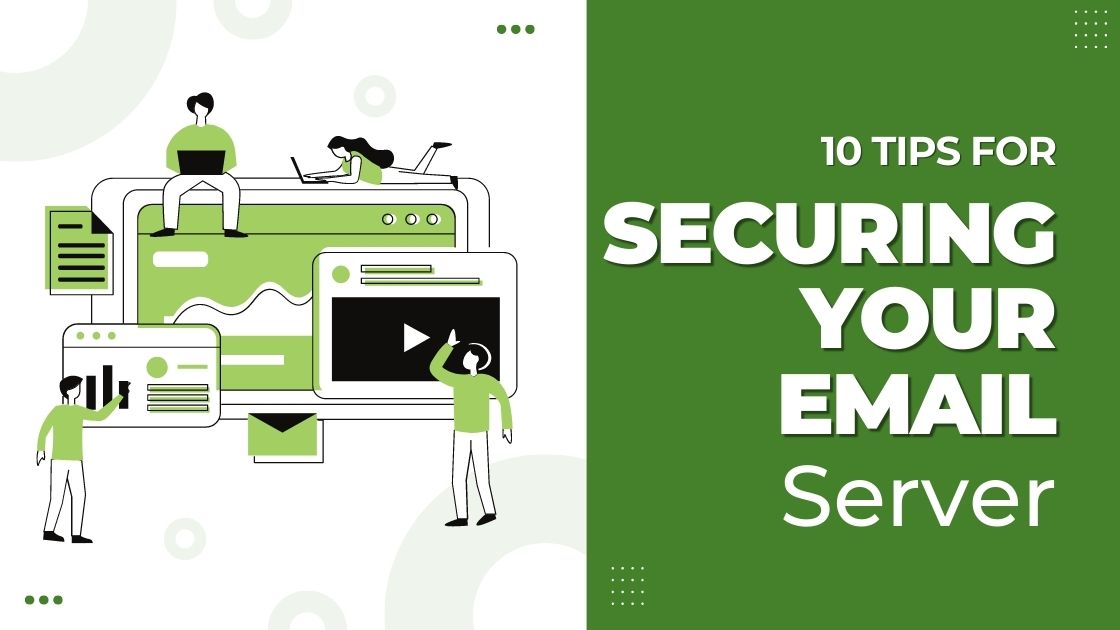Whether you are running a virtual server or a dedicated (bare-metal) server, the mail server is probably the most active server in your data centre. This activeness can be attributed to the traffic that goes through it daily, which raises the issue of securing private data and your business’s information.
Nowadays, getting a protected mail server is not something you should slack on instead, it’s a must-have. In this article, we will be sharing some valuable tips on how you can secure your email server to assist your business.
Table of Contents
1. Regulate User Entry By Setting Up SMTP Verification
Setting up SMTP verification ensures that the people using your server to send emails can only do so until they fill in their usernames and passwords. Doing this helps to regulate access to your server and prevent people from misusing it.
If the configuration is set up correctly, the only accounts that can use your server are the known ones. This tip should be highly considered, especially when your email server has a clean IP address.
2. Ensure You’re Not An Open Relay By Configuring Mail Relay Options
Configuring your mail relay option to be limited is very crucial in securing your email server. All mail servers allow you to decide which domain your mail server will supply mail for. This also means that you can directly choose whom your SMTP protocol should send the mail.
Note that the misconfiguration of this option can be dangerous because it allows spammers to take advantage of your mail server. Then they use it as an avenue to spamming others, and eventually, your email server can get blocked.
3. Set up Reverse DNS To Block Fake Senders
A significant percentage of messaging systems employ the use of DNS lookups to check whether the sender’s email’s domain exists or not before accepting the message. This is also an excellent choice for blocking off fake mail senders.
After you might have set up your reverse DNS, your SMTP helps to check that the IP address of the sender tallies with the domain name provided by the SMTP sender. This is an invaluable tip in getting rid of messages that don’t pass the address matching test.
4. Safeguard Your Server From DOS Attacks By Reducing Connections
You must reduce the number of connections to your server. These factors depend on the server hardware’s explicit details, such as memory or central processing unit (CPU).
The essential factors used to regulate connection to a server are the total number of connections, the total number of concurrent connections, and the highest connection rate. Sustaining the best values for these factors may need refinement as time goes on.
5. Employ DNSBL Servers To Altercate Incoming Email Abuse
One of the best ways you can protect your email server is to use DNSBL servers to fight incoming email abuses. You can reduce the number of spam messages you receive by verifying if the sender’s domain is known by DNSBL servers globally. Setting up this option and using the most significant number of DNSBL servers will drastically help to reduce the effect of unbidden incoming emails.
6. Allow SURBL To Authenticate Message Content
The SURBL helps to take note of unwanted emails depending on fake or despiteful links in the message. Getting a SURBL filter for your email server is one way you can safeguard users from malware attacks.
Currently, it’s not all mail servers that support SURBL.
However, if your mail server doesn’t support it, setting it up will boost your server’s security and your entire network’s security. This is because many Internet security menaces arise from email content.
7. Preserve Local Up Blacklists To Keep Off Spammers
When you have a local IP blacklist on your email server, you can block off some spammers directing their actions at you. Even though preserving this list requires resources and time, it’s invaluable. It is a very effective and productive way of preventing unwanted internet connections from affecting your email messaging system.
8. Set up SPF to Avoid Bluff Sources
SPF means Sender Policy Framework, an approach used to avoid bluff sources. Currently, many abusive email messages are tagged with invalid sender addresses.
The Job of the SPF is to help ascertain whether the sending MTA is permitted to send mails as a representative of the sender’s domain name. When SPF is set up in your server, the sending server’s MX records become authenticated before messages are transmitted.
9. Configure POP3 and IMAP Verification For Privacy
Safety concerns were not factored into the building of POP3 and IMAP connections. Therefore they can be used without a solid verification. This can pose a huge problem because users’ passwords are usually transferred in plain text via your mail server, and so they are susceptible to hackers. A perfect way to set up a valid verification is by using SSL/TLS. It is generally considered to be reliable.
10. Ensure You Have Not Less Than 2 MX Records
Even though this is the last tip we’re giving you here, it should not be neglected. Your email server availability is dependent on your failover configuration. To ensure a steadfast flow of mail to a specific domain, you should have at least two MX records. The first record is used as the primary and the second in an instance where the primary server goes down.

